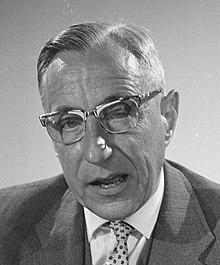Jan de Quay
His Excellency Jan de Quay | |
|---|---|
 De Quay in 1962 | |
| Prime Minister of the Netherlands | |
| In office 19 May 1959 – 24 July 1963 | |
| Monarch | Juliana |
| Deputy | See list
|
| Preceded by | Minister of War |
| In office 4 April 1945 – 25 June 1945 | |
| Prime Minister | Pieter Sjoerds Gerbrandy |
| Preceded by | Jim de Booy (Ad interim) |
| Succeeded by | Jo Meynen |
| Personal details | |
| Born | Jan Eduard de Quay 26 August 1901 's-Hertogenbosch, Netherlands |
| Died | 4 July 1985 (aged 83) Beers, Netherlands |
| Political party | Christian Democratic Appeal (from 1980) |
| Other political affiliations | Catholic People's Party (1945–1980) Roman Catholic State Party (until 1945) |
| Spouse |
Maria van der Lande (m. 1927) |
| Children | 5 sons and 4 daughters |
| Alma mater | Utrecht University (BAp, BLitt, Psy.M, MLitt, PsyD) Stanford University (MSSc) |
| Occupation | Politician · Psychologist · Sociologist · Researcher · Management consultant · Academic administrator · Author · Professor |
| Military service | |
| Allegiance | |
| Branch/service | Royal Netherlands Army |
| Years of service | 1939–1940 (Conscription) 1944–1948 (Reserve) |
| Rank | |
| Unit | Medical Services |
| Battles/wars | World War II
|
Jan Eduard de Quay (26 August 1901 – 4 July 1985) was a Dutch politician of the defunct Catholic People's Party (KVP) now the Christian Democratic Appeal (CDA) party and psychologist who served as Prime Minister of the Netherlands from 19 May 1959 until 24 July 1963.[1]
De Quay studied
Before the
De Quay retired from active politics at 68 and became active in the
Biography
Early life
Jan Eduard de Quay was born in


In 1928 he was appointed lecturer in psychotechnology at the Catholic college of higher education in Tilburg (now the
Politics
From 5 April until 23 June 1945, De Quay was
He served as
Shortly after the installation of the new government, minister of defence Ven den Bergh resigned for personal reasons (family affairs with his United States wife and children). In 1962, the new minister of defence Visser also had to resign after protests against his dismissal of a critical civil servant. In 1961 minister Van Rooy of social affairs resigned after criticism of how he dealt with the new child benefit law. His post was taken over by former state secretary Veldkamp, whose now vacant former position in turn was taken over by Gijzels. In 1963, a proposal to install commercial television was not accepted.
He served as a
Personal life
On 8 August 1927, De Quay married Maria van der Lande (29 August 1901 – 6 November 1988). De Quay died on 4 July 1985 in
Decorations
| Honours | ||||
| Ribbon bar | Honour | Country | Date | Comment |
|---|---|---|---|---|
| Knight of the Order of the Holy Sepulchre | Holy See | |||
| Grand Officer of the Order of Orange-Nassau | Netherlands | 27 July 1963 | Elevated from Commander (29 April 1959) | |
| Commander of the Order of the Netherlands Lion | Netherlands | 27 April 1967 | Elevated from Knight (17 September 1946) | |
References
- ^ "Quay, Jan Eduard de (1901-1985)" (in Dutch). Huygens ING. 12 November 2013. Retrieved 27 May 2019.
- ^ "Jan Eduard de Quay (1901-1985)" (in Dutch). Brabants Historisch Informatie Centrum. 5 September 2009. Retrieved 21 March 2017.
- ^ (in Dutch) Willem Drees gekozen tot 'Dé premier na WO II', Geschiedenis24.nl, 15 January 2006
- ^ (in Dutch) NRC-enquête: Drees en Lubbers beste premiers sinds 1900, NRC Handelsblad, 28 September 2013
- ^ (in Dutch) I&O Research, I&O Research, 13 March 2020
- ^ "Met het CDA op weg naar de fascistische heilstaat" (in Dutch). Vrijspreker.nl. 10 June 2009. Retrieved 12 April 2018.
- ^ "Quay, Jan Eduard de" (in Dutch). Uitgeverij A. van den Oord. 19 February 2009. Retrieved 9 January 2019.
External links
- Official
- (in Dutch) Dr. J.E. (Jan) de Quay Parlement & Politiek
- (in Dutch) Dr. J.E. de Quay (KVP) Eerste Kamer der Staten-Generaal
- (in Dutch) Kabinet-De Quay Rijksoverheid


